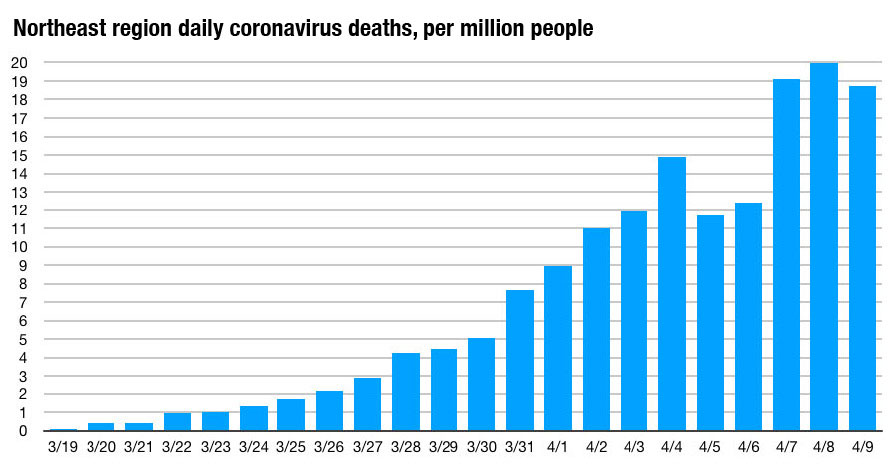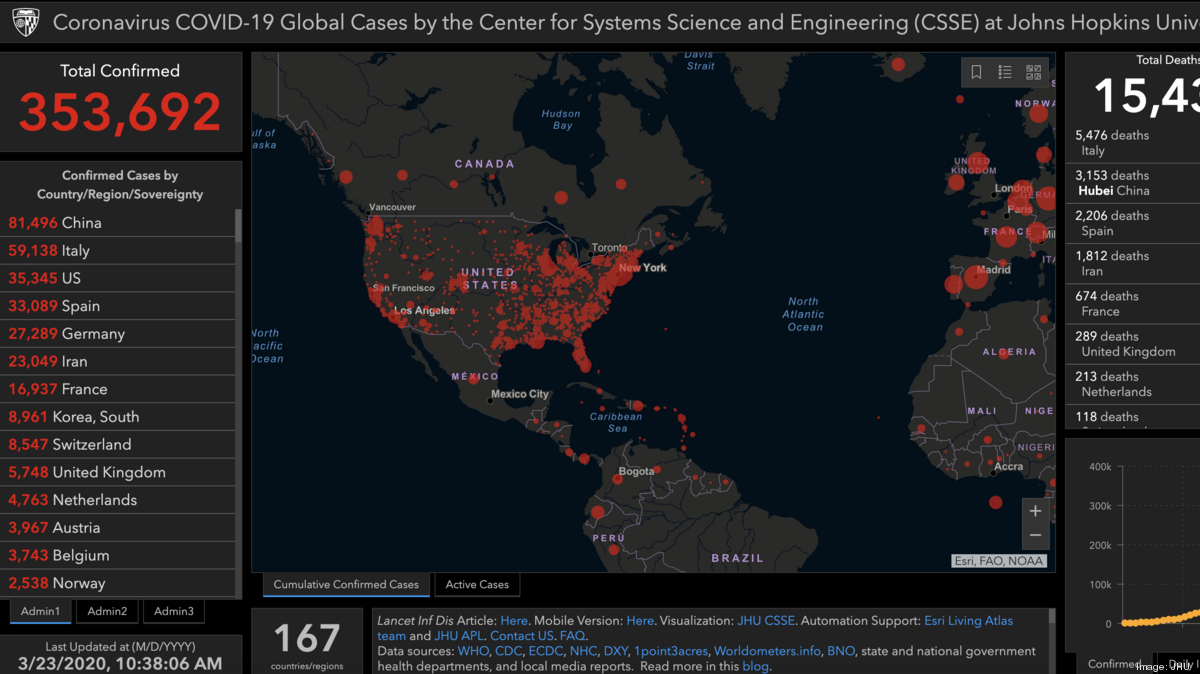

because healthcare systems do not code diagnoses in the same way.

The data that was reported did not look the same coming from all the different hospitals in the U.S. Data on ER visits that could be related to COVID-19 were not reported by all jurisdictions, however. In some circumstances, people who go to the emergency room for symptoms of COVID might be diagnosed with another illness, like the flu or pneumonia. Unless states had the ability to do more widespread testing that included people without symptoms, it’s likely that they were undercounting the total number of COVID-19 cases because asymptomatic people were not included if they did not get a test. If they aren’t sick and do not realize that they were exposed, they are not likely to get tested. It’s also important to keep in mind that there are people who get COVID and do not have symptoms. Later on, it may have turned out that those cases were not related to COVID after all, in which case those cases would be dropped from the report. However, some places did not report suspected cases or deaths-only those that have been confirmed. The totals that were reported sometimes included probable (or suspected) cases and deaths that had not been confirmed. Some states had backlogs of tests from weeks ago, meaning that the data reported was a little behind the current situation. While the numbers were initially updated daily, there were sometimes lags over the weekend or over the holidays. The numbers reported to the CDC are as accurate as a state can provide, though they can change. Some states also provided information about specific populations, such as healthcare workers and people who are pregnant. For example, the CDC displayed data that shows how often people were going out in certain parts of the country and related this data on mobility to the level of virus transmission in those areas during specific times. Some states provided data about how communities had been affected by COVID-19. This data was more meant for public health officials and researchers. States also reported some information that was not accessible to the public the restricted data contained more specific fields that could potentially compromise patient privacy. A high number of cases in a state with a small population would mean something different than the same number of cases in a state that is three times as big. Since each state is not the same size, looking at the number of cases or deaths relative to how many people live in the state tells you more about the spread of the virus than simply looking at the raw data. In other cases, you might see the data displayed as “the rate per 1,000 people” within a given timeframe. In some cases, the data was presented as a percentage. Information about COVID testing, hospitalizations, and the number of people who had recovered was also reported. States reported the total number of cases since they started keeping track (which included both confirmed and probable cases-though not all jurisdictions reported these figures) and the number of new cases and deaths reported within the last seven days. Many point to New Orleans’ failure to cancel Mardi Gras as a precipitating factor in Louisiana’s outbreak and the state ranks fifth in the country in deaths and is home to numerous hot spot counties.States told the CDC about how many cases of COVID they had in the state, as well as how many people had died from COVID. Three counties near this city have some of the highest per capita rate of infections outside of the New York area. In Georgia, a funeral in the small city of Albany became a super-spreader event. A quarter of Florida’s population is older than 60, the age group for whom the coronavirus is most deadly. Ron DeSantis issued a stay-at-home order. Nearly a month later - and after the official case count in Florida reached 7,000 - Gov. In Florida, a beach festival held in early March was the source of dozens of infections. These same states are now poised to be among the earliest to loosen those very restrictions, even though their populations have disproportionate rates of underlying conditions that put people at a higher risk of dying of the coronavirus.

Most states in the South lagged behind the rest of the country in implementing stay-at-home orders, with many waiting until the end of March or early April to do so.


 0 kommentar(er)
0 kommentar(er)
